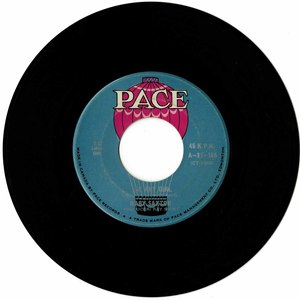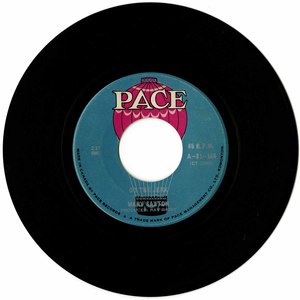Information/Write-up
Mary Saxton: Canada's Northern Soul Voice
Mary Saxton emerged from Edmonton, Alberta in the 1960s as one of Canada’s most compelling and underrated soul-pop vocalists. A powerful voice rooted in rhythm and blues, Saxton bridged the gap between the gritty stylings of American soul music and the melodic sensibilities of Canadian pop — delivering an emotional depth rarely seen in Canadian music of the era.
Raised in Edmonton, Mary began singing at a young age and was influenced by the powerful female vocalists of the Motown and Atlantic rosters. She honed her craft by performing at community events, school functions, and youth clubs around Alberta, quickly gaining attention for her expressive phrasing and natural stage presence.
By the mid-1960s, Saxton was performing with top local musicians, including members of The Lords — a popular Edmonton garage band — and lending her voice to backup sessions for Pace Records, an independent label focused on local talent. Her debut solo singles for the label, produced by the eccentric and legendary Gary S. Paxton in the U.S., showcased her dynamic range and early promise. Tracks like “Losing Control” and “Ask Any Girl” blended northern soul with brassy, upbeat pop, earning regional airplay and critical interest, even as they remained under the radar nationally.
In 1967, she appeared alongside other Alberta artists on Direct... From the Rainbow Ballroom, a promotional live-style compilation capturing the city’s thriving music scene. At the same time, she joined the short-lived group Daisy Hill Puppy Farm, a soul-pop outfit with ex-members of Southbound Freeway. Though the band didn’t last long, it provided Saxton with crucial live experience and solidified her reputation on the western Canadian touring circuit.
Her breakthrough came in 1968 when she signed with Quality Records and released the single “Sad Eyes.” The song became a national hit, reaching the Top 40 in several Canadian markets and establishing her as a solo act of substance. The follow-up, “Wander By,” and other sessions with Quality would form the core of her self-titled debut album, released in 1969 on Quality’s Birchmount subsidiary. Despite minimal promotion, the record remains a cult favorite among collectors of Canadian soul.
That same year, she briefly contributed vocals to The Rising Sun, a studio collective made up of Edmonton musicians including Barry Allen, with whom she had also worked. Their album Born to Be Wild — released in 1969 — featured Saxton performing covers alongside psychedelic and soul-tinged tracks intended to capitalize on the booming rock scene.
After a period of relative quiet in the early 1970s, Saxton resurfaced with The Elastic Band, a groove-oriented live project featuring key western Canadian players. While the group toured actively, no commercial releases materialized, and Saxton again found herself without a recording outlet.
Her comeback arrived in 1977 when she became the flagship artist for Mustard Records, a Canadian indie label. Her second self-titled album was released that year and featured a more polished, disco-influenced soul sound. Singles like “Take a Chance” and “Georgia Eyes” gained modest chart attention and reaffirmed her staying power. Further tracks such as “I Want You” and “Lazy Old Soul” expanded her stylistic palette, blending funk, jazz, and sophisticated pop.
In 1979, Saxton joined the vocal trio Touche alongside Nancy Nash and Rosalind Keene. Their self-titled disco album featured the single “Take a Look (But Don’t Touch),” a sleek dance track that achieved radio play and club rotation. The project introduced her to a broader North American audience, including brief appearances on the U.S. touring circuit.
Saxton’s final major recording session took place in 1980 as part of Ladies in Lights, a Radio Canada International showcase of Canadian women in music. Her three tracks — “Don’t Say No to Love,” “Love Is On Our Side,” and the title track — were written specifically for her and reflected a mature, confident artist fully in command of her voice and vision.
In the words of a 1980 CBC Radio Canada promotional release:
“One of the things about joy is that once you're lucky enough to feel it, you don't always succeed in expressing it for yourself or for others. But there's one girl — a dark-eyed entertainer of charm and warmth who does and can help you to do it too. Mary Saxton can make you feel good, simply because she is so obviously 'feelin' fine' and her songs will definitely please you. Mary has been singing professionally for many years in Western Canada, both on radio and television and has been active in album work as a back-up vocalist. Her talents as a songwriter come to light for the first time on this recording and with help from arranger Curt Watts, Mary shows you that music is her life. Please share it with her.”
By the mid-1980s, Saxton stepped away from the public spotlight. Though her name gradually faded from mainstream memory, her recordings continued to find new audiences among soul collectors, Canadian music historians, and crate diggers. Her original LPs and 45s are now considered treasures of Canadian pop-soul, and her voice remains a testament to an artist who brought passion, power, and elegance to every note.
-Robert Williston



No Comments